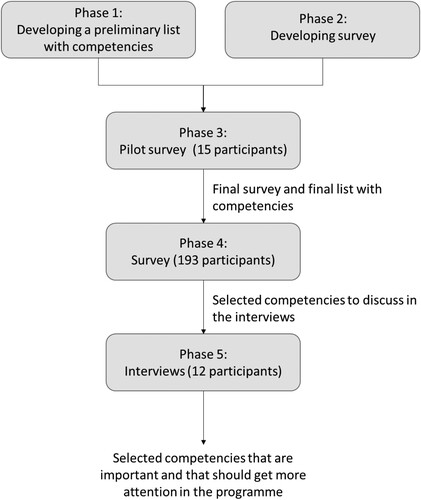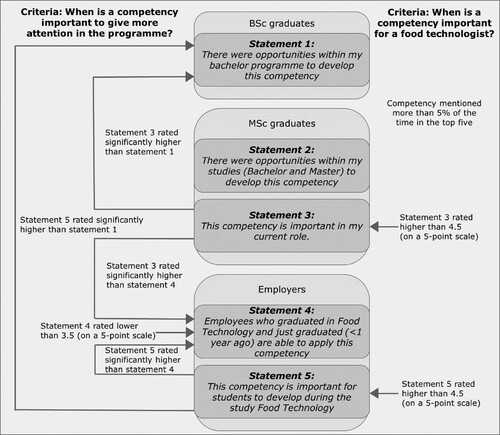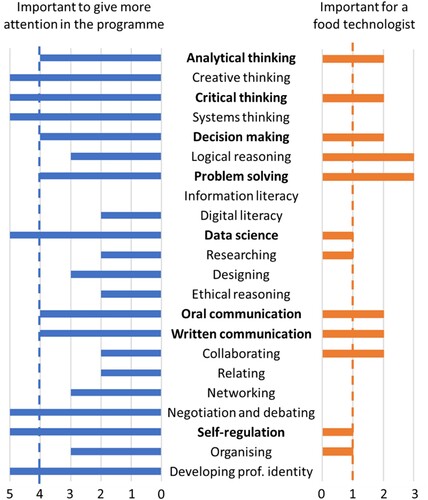Figures & data
Figure 1. Phases undertaken for the study to select competencies that should get more attention in the bachelor program Food Technology at Wageningen University.

Table 1. Preliminary list of 26 competencies divided into five categories, to be used in the pilot study.
Table 2. Grouping of participants and statements posed to them.
Table 3. Demographical distribution of participants: BSc graduates: graduated from the bachelor Food Technology; MSc graduates: graduated from the master Food Technology and <5 year work experience; Employers: professionals in food science and technology and >5 years work experience.
Figure 2. Criteria to select competencies that should receive more attention in the program or are important for a food technologist. All statements from the survey use a 5 point scale. Statements are statistically significantly different when p < 0.05.

Table 4. Example results of survey. Statements are compared for each competency: different letters in a row indicate statistically significant differences (p < 0.05).
Table 5. Final list of 22 competencies for food technologists, distributed over five categories.
Table 6. Responses to the statements: (1) There were opportunities within my bachelor program to develop this competency; (2) There were opportunities within my studies (Bachelor and Master) to develop this competency; (3) This competency is important in my current role; (4) Employees who graduated in Food Technology and just graduated (<1 year ago) are able to apply this competency; (5) This competency is important to develop for students during the study Food Technology. Statements are compared for each competency: different letters in a row indicate statistically significant differences (p < 0.05).


